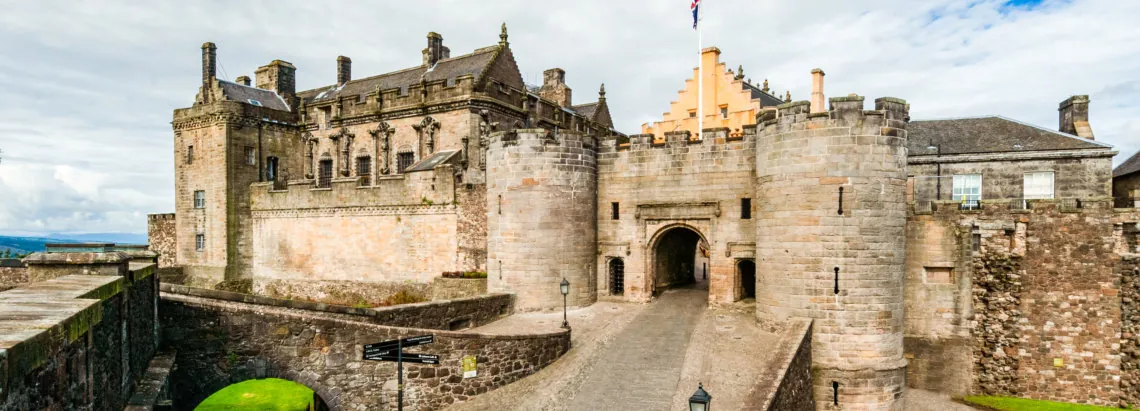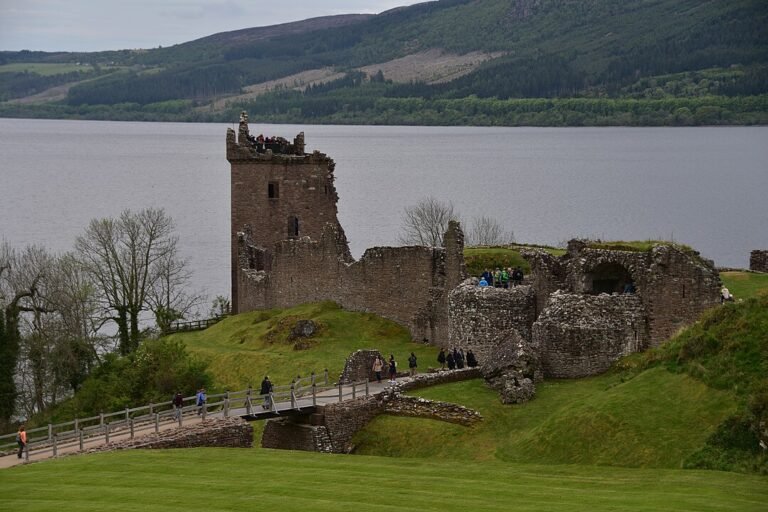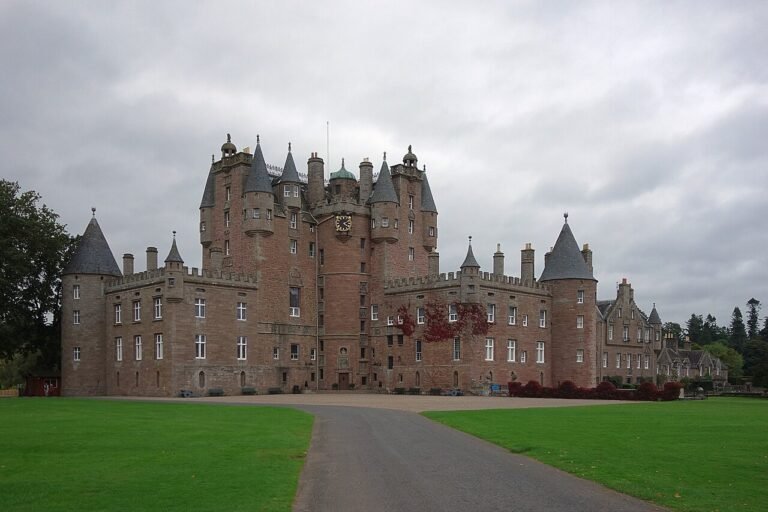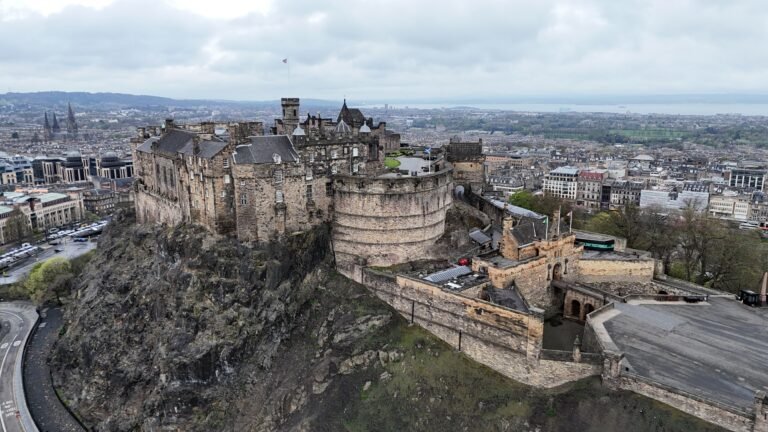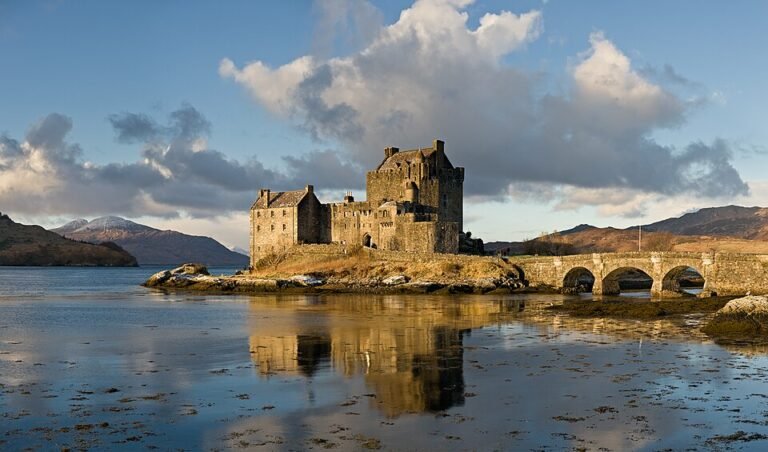Stirling Castle: Scotland’s Crown Jewel of History and Heritage
Introduction to Stirling Castle
Stirling Castle is one of Scotland’s most treasured historical landmarks. Perched atop Castle Hill, it overlooks the city of Stirling and commands sweeping views of the surrounding countryside. This fortress has played a pivotal role in Scottish history for over 900 years, witnessing battles, royal births, and political power plays. It remains a key attraction for those interested in the country’s cultural legacy, military architecture, and royal heritage.
Historical Significance and Timeline
The castle’s origins date back to the early 12th century, although most of the current structures were built between the 15th and 17th centuries. Stirling Castle served as a royal residence for many of Scotland’s monarchs, including Mary, Queen of Scots, who was crowned here in 1543. It also stood at the centre of multiple conflicts, including the Wars of Scottish Independence.
- 1297: The Battle of Stirling Bridge was fought nearby, where William Wallace secured a famous victory.
- 1314: Robert the Bruce’s triumph at the Battle of Bannockburn reinforced the castle’s strategic importance.
- 1490–1603: The Stewart monarchs invested heavily in transforming the castle into a Renaissance palace.
Key Features of Stirling Castle
Visitors to Stirling Castle can explore numerous historically rich sites within the complex:
- The Great Hall: Built by James IV in 1503, it’s the largest medieval banqueting hall in Scotland.
- The Royal Palace: Lavishly decorated apartments that housed James V and Mary of Guise.
- Chapel Royal: A place of worship dating back to 1594, used during Prince Henry’s baptism.
- The Stirling Heads Gallery: Carved oak medallions representing Renaissance figures and royalty.
- Castle Gardens and Ramparts: Offering panoramic views of the Highlands and the River Forth.
Visitor Information and Practical Tips
- Opening hours: April–Sept: 9:30 am–6 pm; Oct–March: 9:30 am–5 pm (last entry 45 mins before closing)
- Tickets: Adults £17.50, concessions £14, children (5–15) £10.50, under 5s free
- Accessibility: Most areas are accessible, with mobility vehicle service and accessible toilets available
- Getting there: Easily reachable via train from Glasgow or Edinburgh (40–60 minutes), followed by a short walk or taxi from Stirling Station
- Facilities: Café, gift shop, guided tours, toilets, baby changing
What Makes Stirling Castle Unique
Stirling Castle isn’t just a military stronghold; it’s a cultural icon. The vibrant interiors of the Royal Palace have been painstakingly restored to their 16th-century splendour, offering a rare glimpse into Renaissance life. Costumed interpreters bring history to life for visitors, making it a dynamic destination for all ages. Its proximity to key battle sites and the Wallace Monument enhances its appeal as a historical hub.
Nearby Attractions and Historical Sites
- The National Wallace Monument: Just 10 minutes away, this tower commemorates Sir William Wallace and offers panoramic views.
- Bannockburn Heritage Centre: Interactive exhibits recount the Battle of Bannockburn with immersive technology.
- Church of the Holy Rude: A medieval church where James VI was crowned, adjacent to the castle.
Suggested Itineraries
One-Day Itinerary
- Morning: Arrive at Stirling Castle when it opens to explore at your leisure or join a guided tour
- Midday: Lunch at the castle’s Unicorn Café or nearby in Stirling’s old town
- Afternoon: Visit the Wallace Monument and take in views of the Forth Valley
- Evening: Dinner at a local bistro and consider an overnight stay in Stirling
Weekend Itinerary
- Day 1: Tour Stirling Castle, explore the Church of the Holy Rude, and stroll through Old Town Jail
- Day 2: Drive or take a tour to Bannockburn Heritage Centre, then enjoy nature at nearby Plean Country Park
Where to Eat and Stay
Places to Eat
- Unicorn Café: Located in Stirling Castle, it offers hot meals, drinks, and cakes with historical décor
- The Portcullis: A family-run gastropub near the castle with hearty meals and a warm atmosphere
- Brea Scottish Restaurant: Award-winning cuisine with locally sourced ingredients, great for couples and special occasions
Places to Stay
- Hotel Colessio: Boutique hotel in a Victorian mansion near the city centre
- The Golden Lion Hotel: Historic 18th-century hotel, centrally located
- Castle Walk Bed & Breakfast: Cosy and convenient with views of the castle
Seasonal Highlights and Events
Stirling Castle hosts numerous seasonal events, from summer performances and historical reenactments to Christmas markets and family workshops. Spring and autumn are ideal for visiting due to fewer crowds and milder weather, while winter offers festive charm and frosty views. Summer brings extended hours and outdoor events, ideal for family travel.
FAQs about Stirling Castle
Do I need to book tickets in advance?
Yes. All visitors must book tickets with a timed entry slot to guarantee admission.
What are the opening hours?
1 April – 30 September: 9:30 am – 6:00 pm
1 October – 31 March: 9:30 am – 5:00 pm
Closed on 25–26 December; reduced hours on 1 January.
How much do tickets cost?
Adults (16–59): £15 (advance) / £16 (on-site)
Children (5–15): £9 (advance) / £9.60 (on-site)
Under 5s: Free (ticket required)
Concessions (60+, unemployed): £12 (advance) / £12.80 (on-site)
Family, Member, Explorer Pass, and Carer discounts available.
When is the best time to visit?
For a quieter experience, plan your trip for weekday mornings outside peak summer.
Is there parking at the castle?
Yes. There’s a paid car park on the esplanade (£4 for up to four hours; £2 for members). Spaces fill quickly.
How accessible is Stirling Castle?
Access is limited due to steep cobbled paths, but there are five accessible parking spaces, four manual wheelchairs (first-come, first-served), and detailed accessibility guides.
Are there bag or stroller restrictions?
Large bags (30L+) and suitcases aren’t permitted, and no storage facilities are available. Security bag checks are in place.
Are there sensory-friendly resources?
Yes. Visitors can request Visual Stories and ear defenders for children and adults at no extra charge.
What are the castle highlights?
Top attractions include the Royal Palace, Great Hall, Chapel Royal, Stirling Heads Gallery, Queen Anne’s Garden, and the Argyll and Sutherland Highlanders’ Museum.
Why is Stirling Castle historically significant?
Built on a volcanic crag overlooking the River Forth, Stirling Castle played a key role in Scotland’s history, witnessing eight sieges, royal coronations, and major battles. Mary, Queen of Scots, was crowned here.
